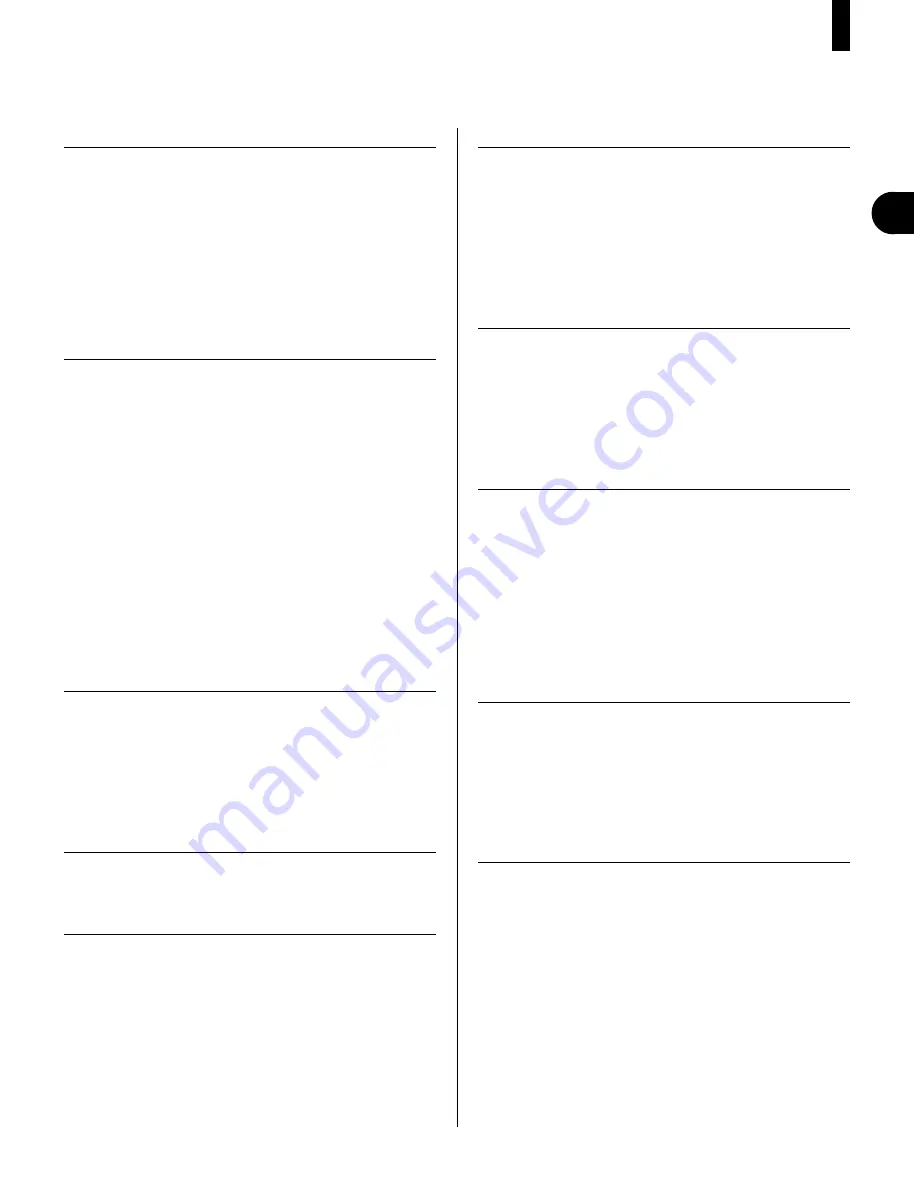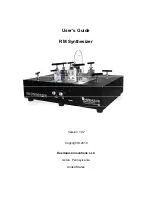
61
◆
◆
◆
◆
◆
◆
◆
◆
◆
◆
◆
◆
◆
◆
◆
◆
◆
◆
◆
◆
◆
◆
◆
◆
◆
◆
◆
◆
◆
◆
◆
◆
◆
◆
◆
◆
◆
◆
◆
◆
◆
●
Note Number/Instrument (Inst)
Range: C0 — C5
This determines the Note Number in the Kit, and hence, the
specific drum/percussion instrument assigned to the note.
You can also select the desired note number by simply
pressing the appropriate key on the keyboard.
NOTE: You should avoid playing the keyboard while editing an
instrument sound, since doing so will automatically select a
different Note Number/Instrument, depending on the key you
press.
●
Drum Map
Settings:
Standard,
Room,
Rock,
Electronic (Electrnic),
Analog,
Jazz,
Brush,
Classic,
SFX 1,
SFX 2
This determines the basic type of drum kit that will be used
for the User Kit. Selecting a particular Drum Map calls up
a certain set of drum sounds and key assignment. (For a
list of the drum sounds and key assignments in each Drum
Map, refer to the separate “Voice Lists and MIDI Data”
supplement.)
NOTE: Be careful not to switch Drum Maps in the middle of
editing a User Kit, otherwise all your parameter edits will be
reset to the default values of the newly selected kit.
●
Pan
Range: random, Left 63 (-63) — Right 63 (+63)
This determines the stereo position of the selected drum
sound. The random setting randomly assigns the drum to a
pan position. This is useful when you want to quickly
assign different drum sounds to be heard from different
random parts of the stereo image.
●
Volume (Vol)
Range: 0 — 127
This determines the volume of the selected drum sound.
●
Amplitude EG Attack Rate (Amp Atk)
Range: 0 — 127
This determines the Attack Rate of the level EG, or how
long it takes for the sound of the selected drum sound to
reach full volume when a note is played. (For more
information about EG parameters, see page 55.)
●
Amplitude EG Decay Rate (Amp Dcy)
Range: 0 — 127
This determines the Decay Rate of the level EG, or how
rapidly the sound dies down as the note is held. Higher
values result in a longer Decay rate. (For more information
about EG parameters, see page 55.)
NOTE: This parameter may little or no effect for certain short
percussion sounds.
●
Amplitude EG Release Rate (Amp Rls)
Range: 0 — 127
This determines the Release Rate of the level EG, or how
rapidly the sound dies out after the note is released. (For
more information about EG parameters, see page 55.)
NOTE: This parameter may little or no effect for certain short
percussion sounds.
●
Reverb Send (Send Rev)
Range: 0 — 127
This determines the level of the selected drum sound that is
sent to the Reverb effect. A value of 0 results in a com-
pletely “dry” drum sound, no matter how much Reverb is
applied to the User Kit.
NOTE: Keep in mind that the Reverb effect must be properly
enabled and set for this parameter to work as intended. Also,
the Reverb Send parameter (page 45) must be set to an
appropriate value.
●
Filter Cutoff (Filter Cut)
Range: 0 — 127
This determines the cutoff frequency of the filter applied to
the selected drum sound, or the frequency point around
which other frequencies are filtered out. Lower cutoff
values create a deeper, more rounded tone, while higher
values create a thinner, brighter tone.
●
Filter Resonance (Filter Res)
Range: -64 — +63
This determines the amount of filter resonance or emphasis
of the Filter Cutoff parameter above. Higher values
increase the emphasis of the cutoff frequency, producing a
higher resonant peak, while lower values produce a rela-
tively flat response.
V
oice Edit Mode
○ ○ ○ ○ ○ ○ ○ ○ ○ ○ ○ ○ ○ ○ ○ ○ ○ ○ ○
Other Voice Functions
Summary of Contents for QS300
Page 1: ......
Page 2: ......
Page 3: ......
Page 4: ......
Page 46: ...42 ...
Page 100: ...96 ...
Page 108: ...104 ...
Page 142: ...138 ...
Page 166: ...162 ...
Page 182: ...178 ...
Page 217: ......











































